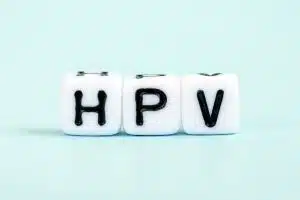
Continuing our answers to the 30 most important STD test questions about the HPV virus:
5 What are lesions?
We talk about lesions when the virus is no longer just an STD infection Tested and located in the superficial part of the cervix. But it integrates into the cells and substantially alters them and their DNA.
Simplifying, we can think of the course of the virus in 4 stages:
- When you have a Test for an infection, the virus resides in the superficial part of the membrane and does not modify the cells, yielding a negative result.
- If there is a lesion, the virus has started integrating inside the cell and can cause its alteration. In low-grade lesions (LSIL), many cells begin to alter.
- When modified cells become numerous, we call it a high-grade lesion (HSIL).
- When the modified cells descend beyond the basement membrane, reaching the blood and lymphatic vessels, we talk about a tumour.
Therefore, the difference between a “pre-neoplastic” phase (which does not go beyond the basement membrane) and a tumour phase is important regarding risk and treatment. The timescales and probabilities of progression/regression are very different. Doctors don’t like to use the term “neoplastic” any more because it causes unjustified anxiety in patients as that word has such strong associations with STD cancer. However, there is a possibility of progression from low to high grade.
6 How are injuries classified?
The Medical profession has HPV-type tests and has then discarded the classification of lesions (Cin) and instead classifies them by high and low risk. SIL stands for “Intraepithelial lesion,” with the addition of H for high or L for low. Low-grade lesions (formerly Cin 1) are classified as LSIL, whereas the more serious high-grade lesions (formerly Cin 2 and 3) are HSIL.
7 In what percentage can lesions develop into tumours?
LSIL lesions (formerly Cin 1) may spontaneously regress in the first two years, ranging from 40 to 80%; in the third year, it drops to 20%.
HSIL lesions (formerly Cin 3) have a 30% chance of regressing spontaneously and a 12-36% chance of progressing towards tumour forms.
The human body often eradicates LSIL on its own, so STD healthcare Test providers often do not need to administer treatment when they find it, despite the possibility of progression from low to high risk.
In HSIL, however, since there is only a 30% probability of getting more serious complications, it is necessary to intervene with less aggressive treatment. This results in recovery in 90% of cases, so it is better to treat proactively. In the case of LSIL, the percentage of success, both spontaneously and through intervention, is comparable. Subjecting the body to an unnecessary procedure is not always appropriate.
8 What are genital warts?
Warts are one of the symptoms of HPV and result from infection by low-risk papillomas. They are treated as part of the spectrum of sexually transmitted diseases (STDs) and are lesions on the skin of the genitals. They often contain viruses 6 and 11, which are not cancer-causing strains but are still very contagious. Warts are visible externally; however, it is necessary to examine the internal sexual organs. They are common in men and women and can be transmitted by petting.
9 Does the Virus affect males, too?
Yes, men also contract the virus and contribute to spreading it. The prevalence of HPV infection in women shown by Testing reveals two peaks around the ages of 25 and 45. And in the male population, the prevalence of the infection remains high throughout life. Exams show that Men are effectively a source of the viruses. However, the symptoms are less visible: it is rarer for men to have lesions, but they are not exempt.
The problem is that doctors do not have a properly agreed-upon way of diagnosing men.
Some say that this means that when you meet a new partner, get tested to protect yourself from STDs. However, it is not a proven or certain protection against HPV because it can best be detected in women. For these reasons, using a condom with new partners is always the best advice for an STD defence.
Homosexual men are more at risk than the general male population of getting HPV-related anal cancer. They derive greater benefits from vaccination compared to the general male population. HPV Health Test professionals believe this to be key to the prevention of lesions and cancer of the anus, penis and throat.
Homosexuals and any HIV-positive person can often access free vaccination as they are regarded as being more vulnerable to HPV.
10. Is there a medical cure for the human papillomavirus?
Currently, medicine has not found a cure. No food supplements or immunostimulants have proven effective in treating the lesions. The vaccine itself is preventative and is not a cure for pre-existing HPV. However, it is possible to treat the lesions. Treatment targets lesions before they become cancerous. This approach eliminates the lesion (not the virus); recovery happens in over 90% of cases.
